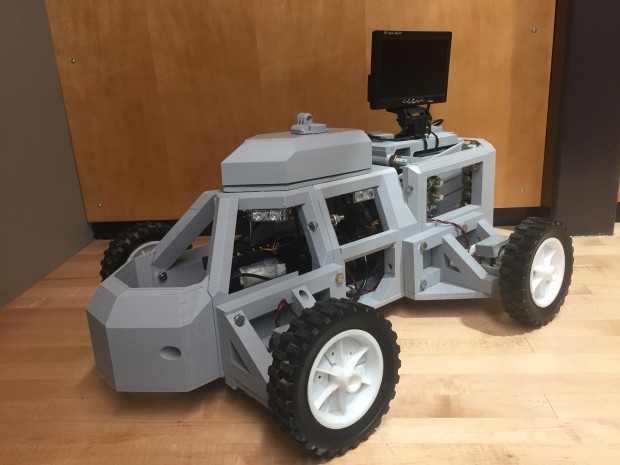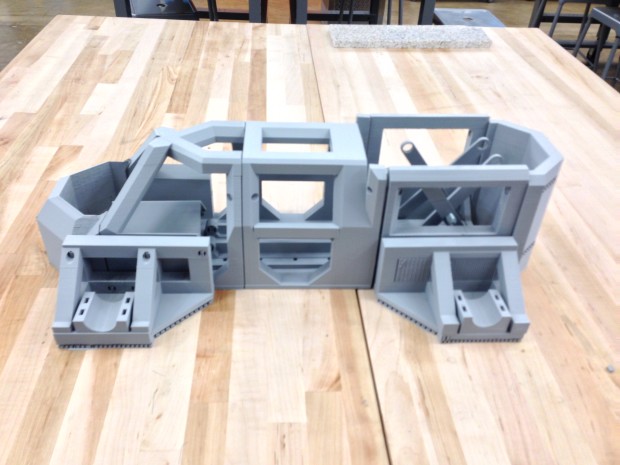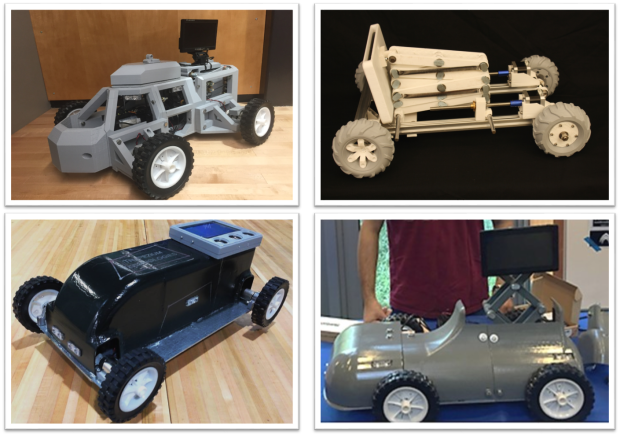Police officers may getting a robot partner to assist with traffic stops.
During 2015 alone, over 100 individuals were fatally shot during traffic stops.
According to the FBI, between 2000 and 2012, 127 police officers have been killed and 72,413 have been assaulted during traffic stops.
Statistics like these help reinforce exactly why routine traffic stops are stressful and sometimes deadly situations for motorists and law enforcement officers alike.
We don’t believe that this status quo is acceptable. That’s what motivated us, two Duke University students, to develop and build the Sentinel Robotic System.
(See in Action, courtesy of Trapezium Technologies and YouTube)
Sentinel’s goal is to create a buffer zone between officers and drivers.
The semi-autonomous robot can scan driver’s licenses, ticket the driver, and even detect alcohol and THC.
The body of the robot is completely 3D-printed, and can be modified for different law enforcement agencies.
The robot’s inventors are currently crowdfunding on Indiegogo to bring this robot cop to police forces.
Sentinel Robotic System

Features
- 170° HD Camera for 2-way video communication and incident recording
- Driver’s license scanner and digital ticketing capabilities
- Software to automatically populate driver’s license information into incident reporting form
- Seven-foot lift can reach some of the highest windows on the road
- High-visibility police lighting
- Semi-autonomous all wheel drive allows easy operation in any weather
- Sensor array capable of detecting alcohol and THC at the same sensitivity as a police officer – no more, no less
The exoskeleton of this robot was designed using 3D modeling and printed using fused deposition modeling (FDM) – in other words – 3D printing.
We also designed this robot to be modular, so that it could be easily modified to meet the needs of each law enforcement agency. This also makes repair turnarounds much faster.
The result is a robotic system that is robust and adaptable and can be produced at a much lower cost compared to conventional fabrication techniques.

The robot assembly was completed with simplicity in mind.
Most military and law enforcement robotics are complex machines that require expert robotics and mechanics knowledge.
We wanted our system to easily maintained in the event of a failure in the field.
Not Just Another Military Police Robot
Just as important as what we choose to include is what we choose to leave off.
Here at Trapezium, we do not believe that military robots can be effectively re-purposed for community policing.
That’s why the Sentinel has been designed from the ground up to serve purely as a law enforcement tool. The Sentinel does not carry any lethal or non-lethal weapons and we promise to keep it that way.
Our Progress So Far
In the seven months we have been working on this we’ve made tremendous progress towards our dream.
From conception to prototype, the Sentinel VX1 has gone through 4 major iterations (earliest to most recent, clockwise from top right).

We designed this robot with feedback from police officers. They continuously provide us with invaluable suggestions about what would be useful in the field and we put their input into each iteration.
Our Dream and How You Can Help
We began developing this project with the hope that our efforts might be able to save a life. If we can prevent even a single violent encounter from occurring we will feel that the Sentinel has served its purpose.
We’ve built several prototypes and with each successive iteration have gotten closer to a product that could be deployed in the real world. But we need your help.
When we started this project we pooled together our personal funds to build the first prototype.
We’ve been fortunate enough to find a small sponsor who shared our vision and were awarded a small grant to help us continue our work, but with this prototype, we’ve reached the limits of what we can personally fund.
In order to build the Sentinel that can be deployed to help save lives, we need to raise additional capital.
The $7,500 we are raising through crowdfunding on Indiegogo will go directly towards building and testing a fully functional prototype with all the features we need to have the impact we would like.
If you believe in this as much as we do, we would love to have you along for the ride.
Other Ways You Can Help
We understand that sometimes you just can’t contribute, but if you believe in this as much as we do, there are other ways that you can help!
- Help share this Indiegogo campaign with your friends and coworkers!
- Help us get the word out
- If this is something you would like to see implemented in your community or your police department, reach out and contact us here.
- Once we build our fully-functional prototype we will reach out to these police departments and invite them to demo our product.
















